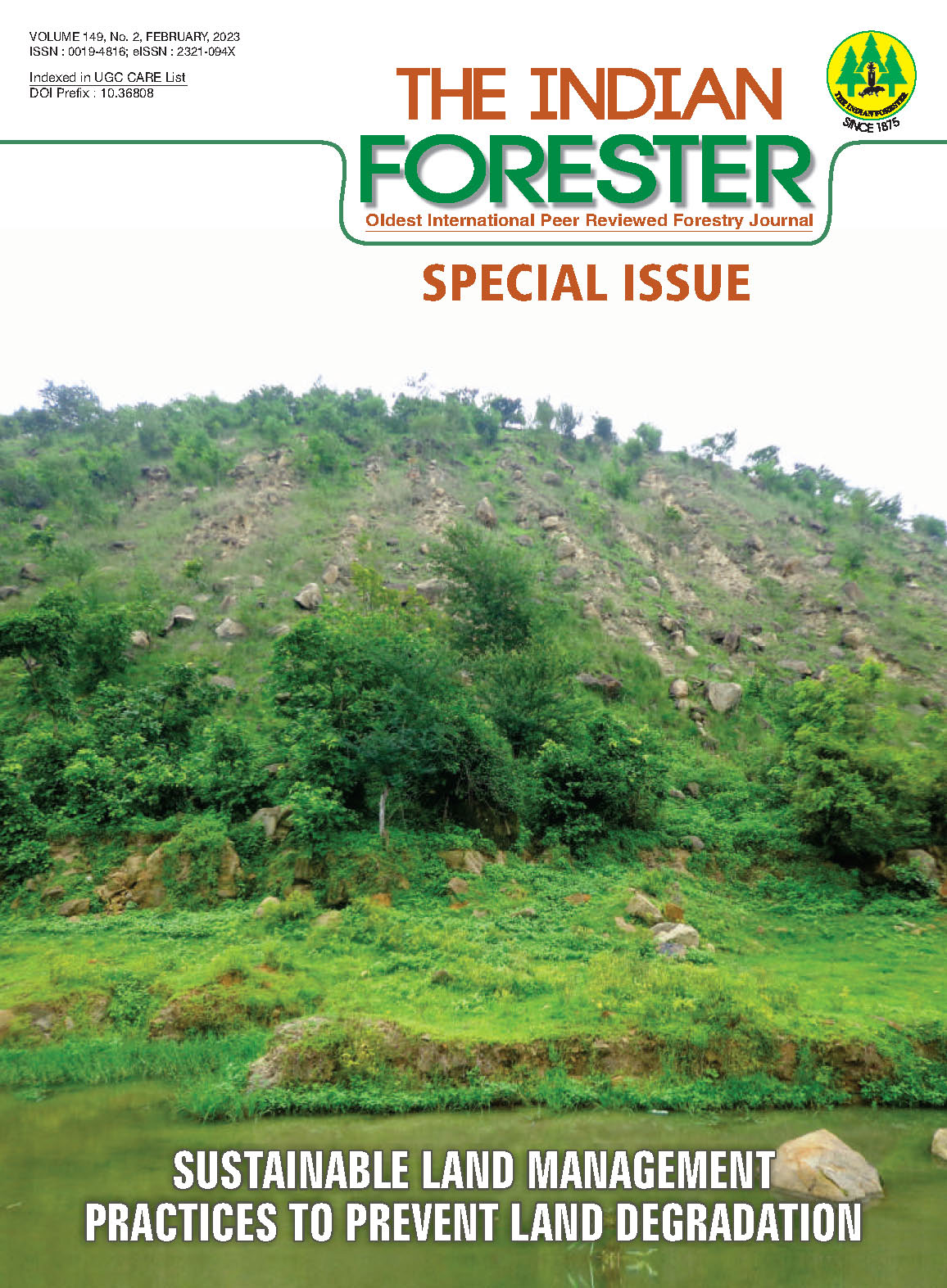Land Degradation : Finding solution through Agroforestry in the Indian Himalayan Agro-Climatic Zones
DOI:
https://doi.org/10.36808/if/2023/v149i2/169835Keywords:
Land Degradation, Land Restoration, Sustainable Land Management, Agroforestry, Indian Himalayas.Abstract
Land degradation has emerged as a big challenge for policymakers, environmental stakeholders, and forest dwellers worldwide. Re-establishment of land productivity, or "land degradation neutrality," to support services and the functioning of ecosystems as well as to ensure food security has become an important target for sustainable development. India being the second most populous and mega-diverse country in the world, land degradation is definitely a major problem. Viewing India on the basis of agro-climatic zones, every state with a different geographical and forest pattern and a different agricultural model has exploited the land and forest cover, converting it into degraded, barren, or fragmented land. The agro-climatic zones of the Indian Himalayas, classified as western and eastern Himalaya, present a different picture of ecological functioning and climatology. The majority of the region is occupied by mountain ranges with glaciers, deep valleys, gorges, and high peaks, along with the traditional human settlements. The continuous developmental activities, unplanned agriculture practices, migration to the plains, and overexploitation of natural resources have resulted in a high rate of land degradation in the region. Under these circumstances, it has become essential to restore the paradise of this vast ecosystem by adopting management practices to ensure livelihood, food security, and a healthy environmental system. Climate-smart agriculture with multifaceted approaches has demonstrated greater potential for mitigating the crisis and halting the ecological deterioration of the Indian Himalayan ecosystem. This review focuses on land degradation in India, with special emphasis on Indian Himalayan regions, and land restoration through the adoption of suitable agroforestry practices for sustainable land use and management.Downloads
Download data is not yet available.
Downloads
Published
2023-05-03
How to Cite
Pandey, S. (2023). Land Degradation : Finding solution through Agroforestry in the Indian Himalayan Agro-Climatic Zones. Indian Forester, 149(2), 140–148. https://doi.org/10.36808/if/2023/v149i2/169835
Issue
Section
Articles
License
Unless otherwise stated, copyright or similar rights in all materials presented on the site, including graphical images, are owned by Indian Forester.





